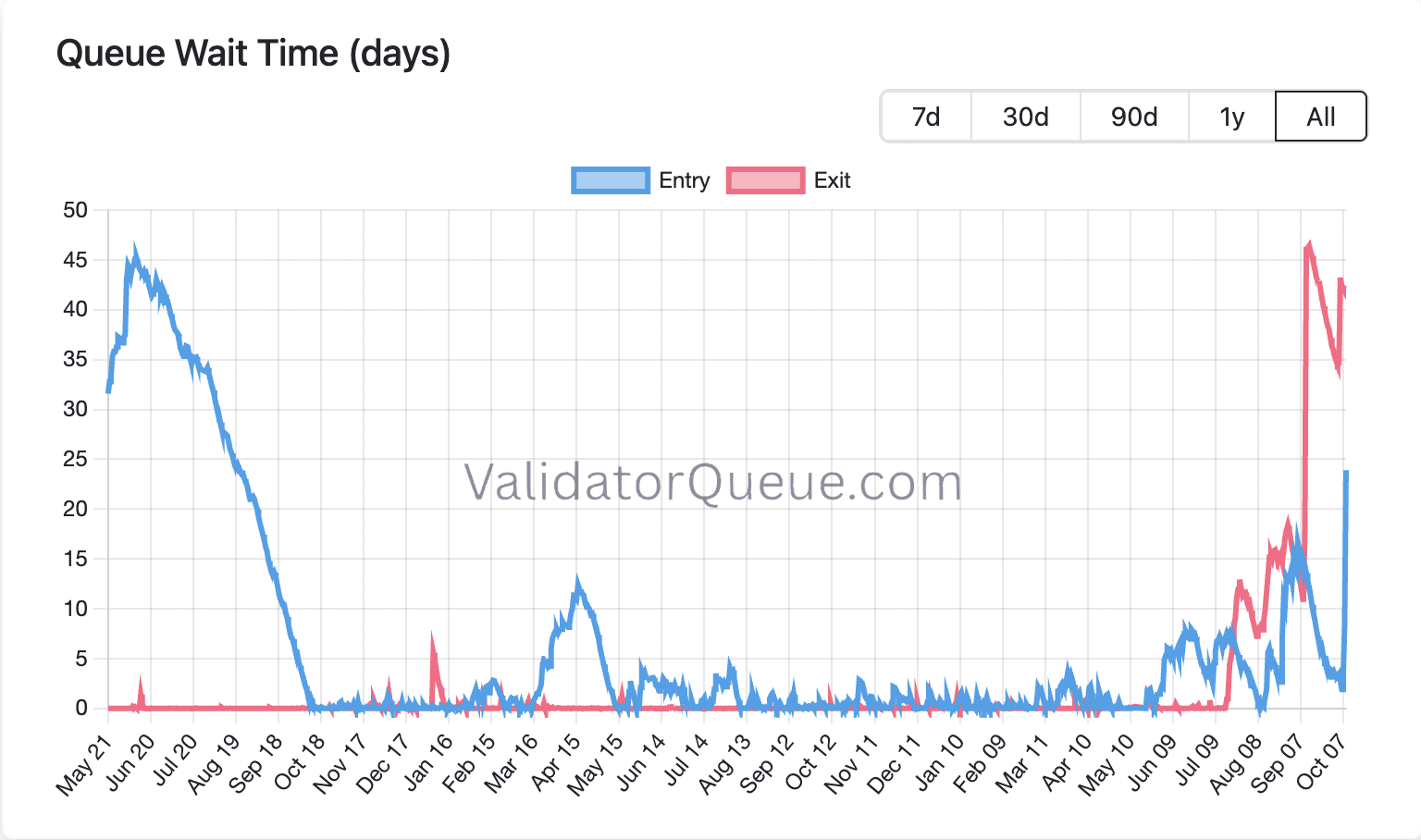The Kohaku roadmap is a privacy- and security-first wallet framework from the Ethereum Foundation that makes wallets operate as sovereign clients, exposing only transaction-essential data. It pairs an SDK and browser-extension demo to enable private transactions, light-client browsing, and future account-abstraction upgrades.
-
Kohaku roadmap prioritizes wallet privacy and sovereign client design
-
Validator queues have surged due to rising staking demand, ETF-linked staking products, and repositioning by large validators
-
Exit wait times topped ~40 days; institutional staking products (ETF staking features) are reshuffling on-chain staking supply
Kohaku roadmap: privacy-first Ethereum wallet framework ahead of Devcon 2025. Learn what changes and how validators and ETFs affect ETH staking — read now.
What is the Kohaku roadmap?
Kohaku roadmap is a toolkit and reference implementation from Ethereum researchers that combines an SDK and a browser-extension wallet to enable private, secure transactions and sovereign client behavior. The roadmap outlines features like light clients in browsers, zero-knowledge identity recovery, and privacy-first peer-to-peer connections for self-custodial wallets.
How will Kohaku improve wallet privacy and security?
Kohaku uses client-side techniques and selective disclosure to limit data exposure. It leverages zero-knowledge proofs for identity recovery and designs light-client primitives for browsers to avoid centralized custodial services. As Nico Schabanel summarized, “It’s time for us to go public so you all can go private.”
The roadmap also formalizes support for account abstraction primitives and post-quantum verification research to future-proof wallet key management.

The Ethereum Foundation plans a Devcon demo (17–22 November 2025) to showcase a browser-extension reference wallet and SDK. The demo will illustrate private transaction flows, light-client operation in constrained environments, and a prototype of ZK-based recovery.
Why are Ethereum validator queues spiking?
Validator entry and exit queues have climbed to two-year highs as staking demand shifts and new institutional products enable integrated staking exposure. Data from Validator Queue shows exit wait times topping roughly 40 days while entry demand rose sharply, signaling a large-scale reshuffle of staking positions.

Source: Validator Queue
Multiple factors contribute:
- Institutional staking products (staking-enabled ETFs and fund integrations) increase coordination between on-chain validators and off-chain financial products.
- Restaking protocols and yield-seeking rotations prompt validators to exit and re-enter with different strategies.
- Operational adjustments — such as validator consolidation or slashing-avoidance measures — have temporary effects on queue lengths.
How are ETF staking approvals affecting ETH supply?
ETF staking features (recently added to several U.S. spot Ether funds) create institutional demand for staking exposure while enabling broader capital flows between custody and staking services. This dynamic can tighten liquid staking availability on-chain and lengthen exit queues as large positions rebalance.
Recent product launches and filings referenced in public filings (e.g., fund amendments enabling staking) signal growing overlap between traditional funds and on-chain staking economics.
How is ETH price reacting to network changes?
ETH price climbed above $4,400 in late September and has since cooled modestly but remains elevated versus summer lows. The confluence of ETF approvals, rising staking yields, and network upgrades has likely provided support, though short-term volatility persists as validators reposition and markets digest institutional flows.
How to prepare for Kohaku-enabled wallets?
- Install and test the reference browser-extension demo at Devcon or from official developer releases.
- Use hardware-backed key storage and verify zero-knowledge recovery flows in a controlled environment.
- Monitor official Ethereum Foundation releases and integrate SDK updates before migrating custodial systems.
Frequently Asked Questions
Will Kohaku change how self-custody works?
Yes. Kohaku aims to make wallets sovereign clients that reveal only transaction-essential data, enabling users to retain custody while improving privacy and reducing dependence on centralized relays or custodians.
When will the Kohaku demo be available?
A demo is expected at Devcon (17–22 November 2025), with the SDK and reference extension published by Ethereum Foundation researchers around that timeframe.
Key Takeaways
- Kohaku roadmap focuses on privacy: SDK and extension promote selective disclosure and sovereign client models.
- Validator queues signal institutional reshuffling: Entry and exit queues hit multi-year highs amid ETF staking and restaking activity.
- Market and protocol evolution are concurrent: Privacy tooling and staking productization together shape Ethereum’s near-term technical and financial landscape.
Conclusion
The Kohaku roadmap marks a strategic push toward wallet privacy and sovereign client design while validator queues and staking-enabled ETFs reshape on-chain economics. Watch the Devcon demo for practical previews, and monitor validator metrics for signs of continued institutional rotation and network effects.
